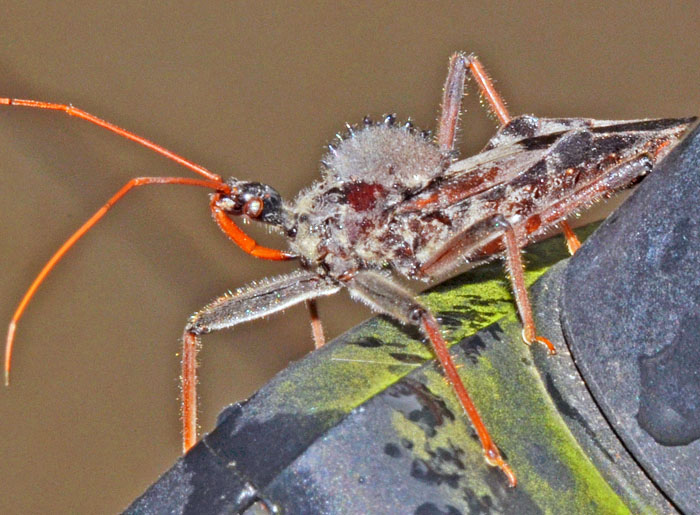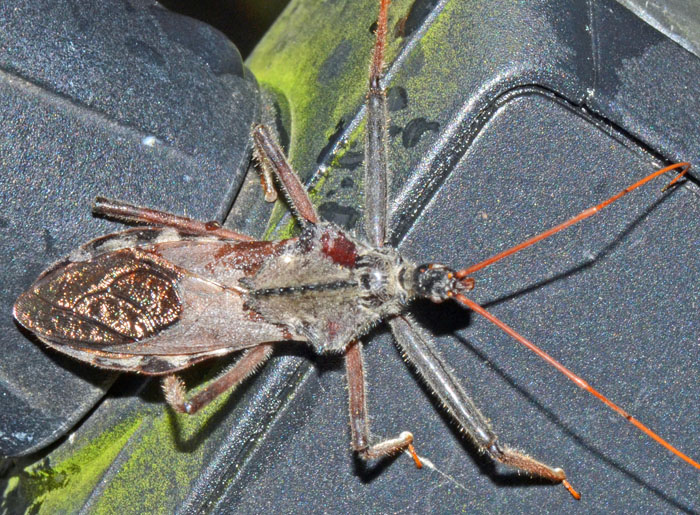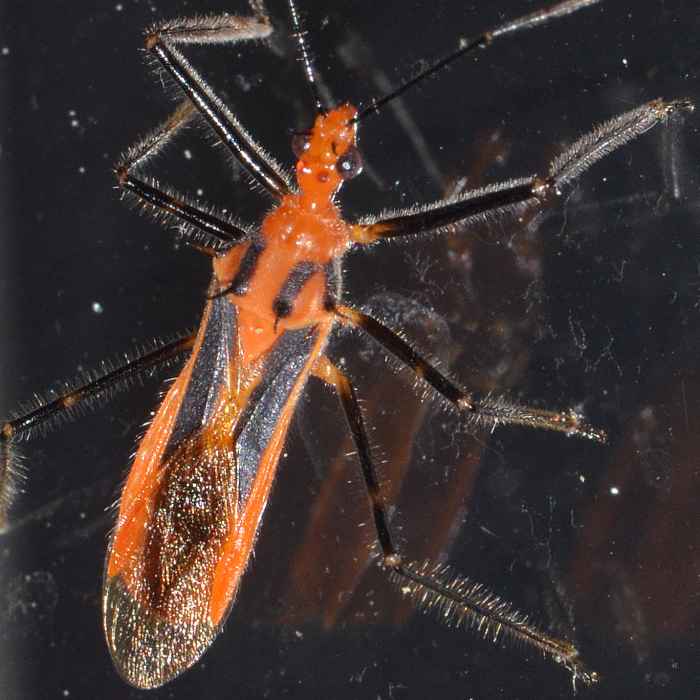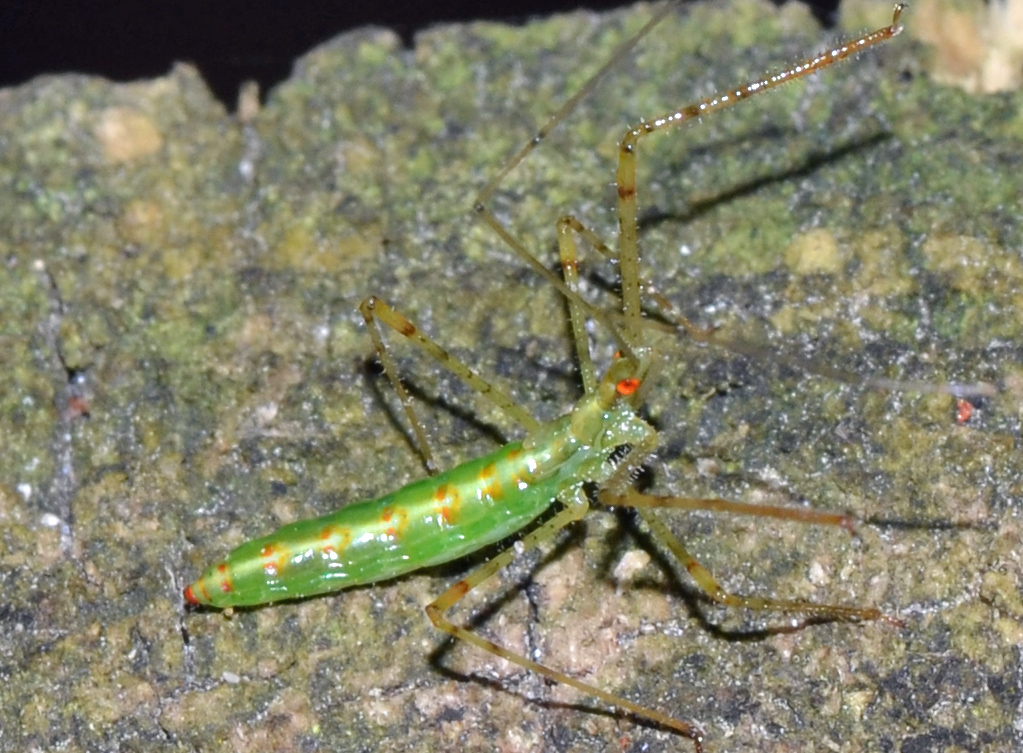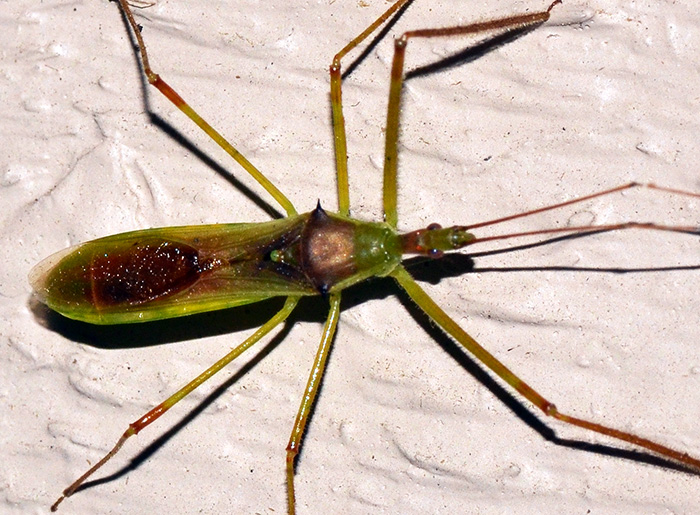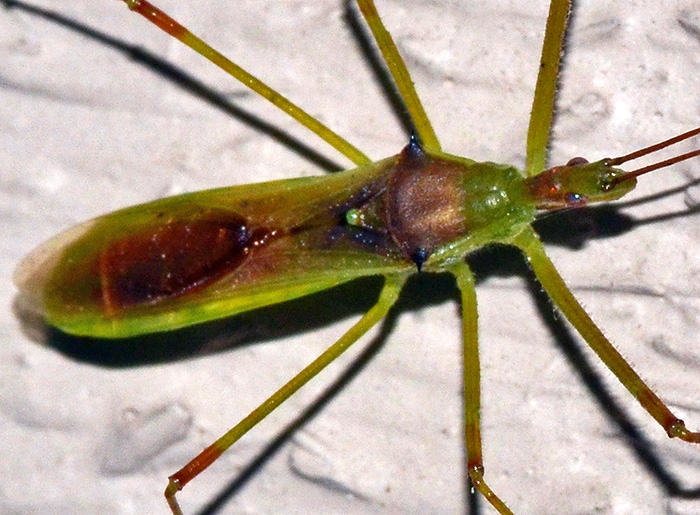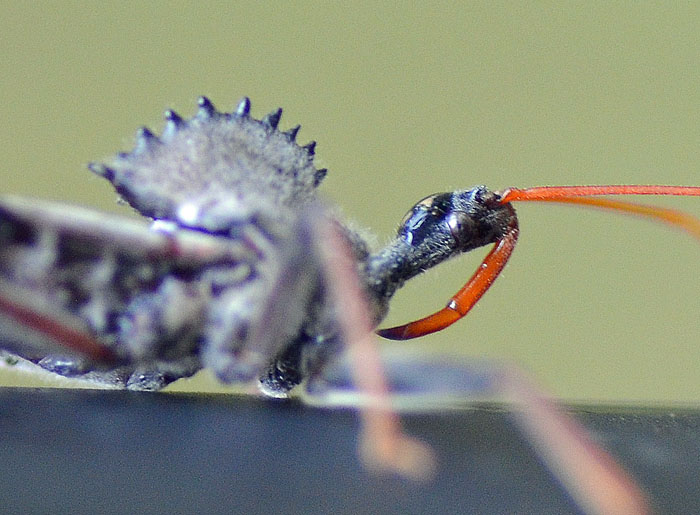 Arilus cristatus (Wheel Bug). | This large assassin bug features a wheel-like structure on its back. Wheel bugs have a reputation of being vicious and engage in cannibalism. Their bite has been described as worse than stings from bees, wasps, or hornets. They also have a pair of orange-red scent sacs that can give off a pungent scent. Despite these shortcomings, wheel bugs are highly beneficial as they prey on various pest insects.
UF: http://bugguide.net/node/view/1177981 | ||
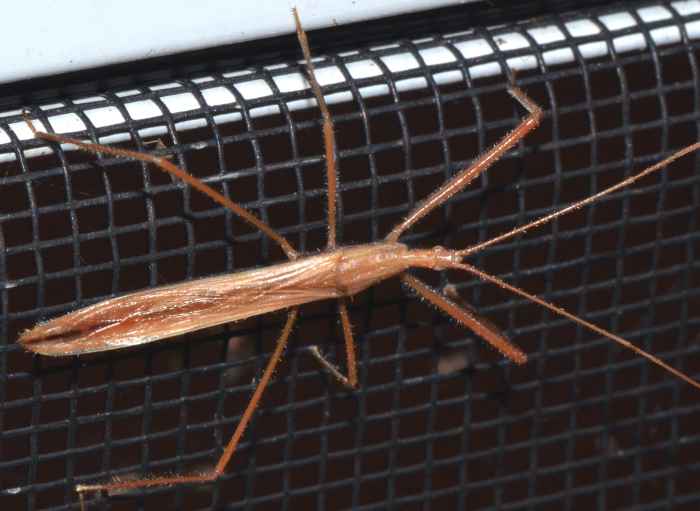 Doldina interjungens. | Seemingly a very rare find. This assassin bug is Doldina interjungens. It came to the light of our living room window. It has a characteristically skinny body (aspect ratio 5.5-6) and long antennae. This specimen is likely an adult female. bug guide (this photo): http://bugguide.net/node/view/582051 E. Bergroth, Entomol. News, 24, 263 (1913): http://alturl.com/4fztn | ||
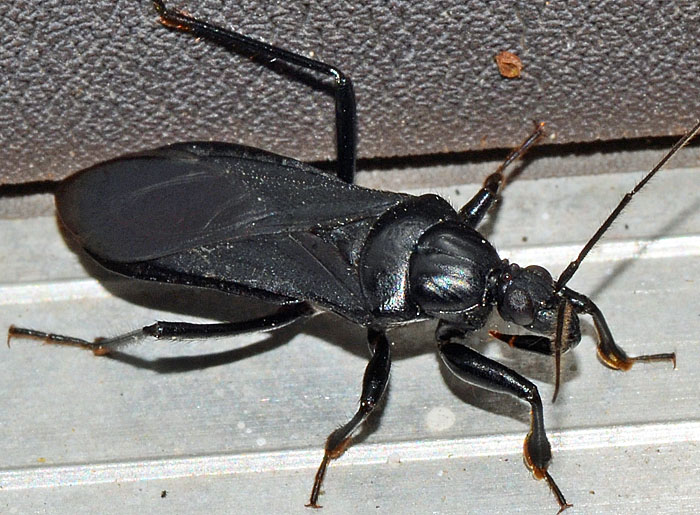 Melanolestes picipes (Black Corsair) ♂. | The Black Corsair is a hunter of other insects. It is known to feed on May Beetles (Phyllophaga) attacking them from behind and holding on to the prey with the spongy pads on its legs. It can afflict painful bites to humans. Females are flightless. bug guide (this photo): http://bugguide.net/node/view/1056052 | ||
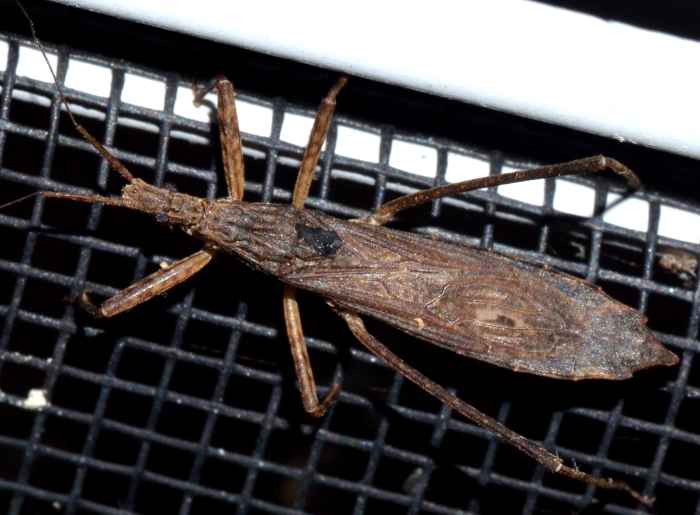 Pygolampis pectoralis ♀. | This assassin bug is Pygolampis pectoralis. It can be distinguished from the only other Pygolampis species in North America by the length of the first antennal segment. In P. pectoralis it is about twice as long (rather than approx. equally long) as the anteocular area (head area anterior to the eyes). bug guide (this photo): http://bugguide.net/node/view/636034 | ||
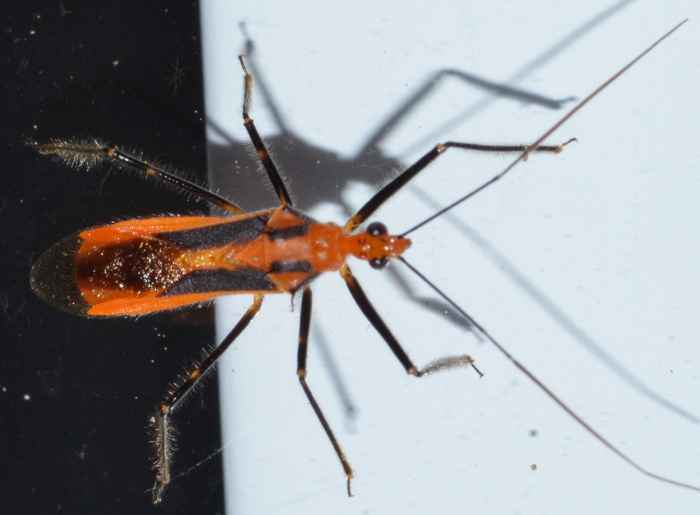 Repipta taurus (Red Bull Assassin). | The Red Bull Assassin (Repipta taurus) can be easily confused with other assassin bugs such as Zelus longipes. A distinguishing mark are the projecting spines on the thorax of R. taurus. It can be found in the Eastern and Southeastern US as well as Texas.
bug guide (these photos): http://bugguide.net/node/view/631650 | ||
 Zelus longipes (Milkweed Assassin Bug) ♂. | This is a 'milkweed assassin bug' a.k.a. 'longlegged assassin bug' (Zelus longipes). It is a beneficial insect as it feeds on prey such as flies and mosquitoes. It is no threat to us but the 'bite' can cause a burning sensation lasting several days. Their size and color varies greatly. bug guide: http://bugguide.net/node/view/4832 UF: http://entnemdept.ifas.ufl.edu/creatures/beneficial/bugs/zelus_longipes.htm | ||
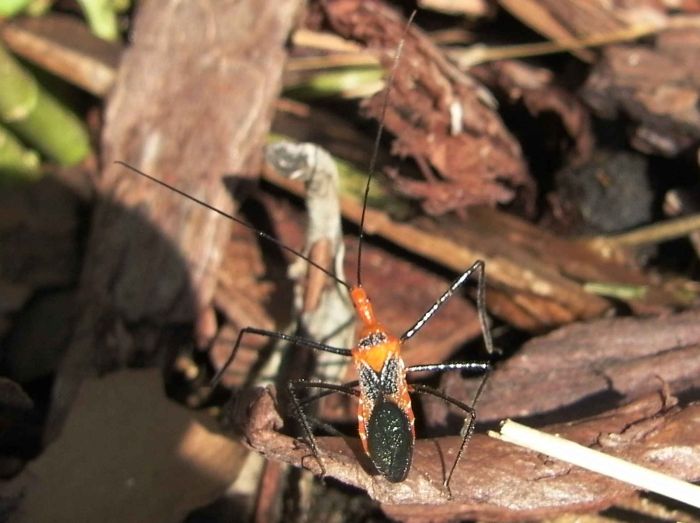 Zelus longipes (Milkweed Assassin Bug) ♀. | I believe this bug is a female of Zelus longipes. It's a mimicry of the large milkweed bug (Oncopeltus fasciatus). bug guide: http://bugguide.net/node/view/4832 UF: http://entnemdept.ifas.ufl.edu/creatures/beneficial/bugs/zelus_longipes.htm | ||
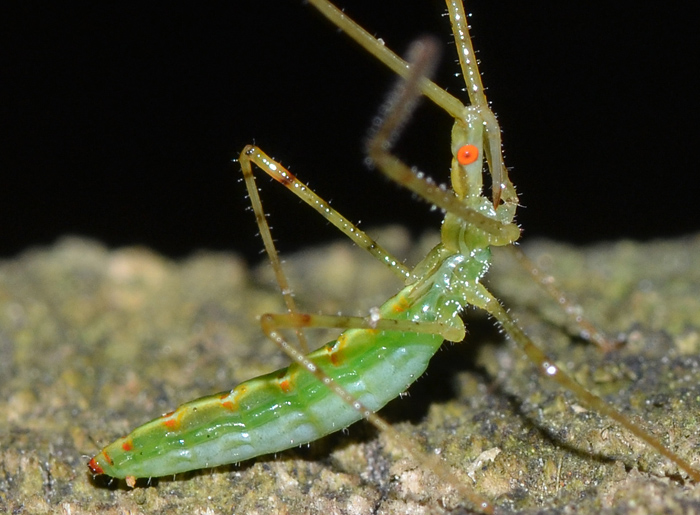 Zelus luridus (Pale Green Assassin Bug) - imm. | A nymph of the Pale Green Assassin Bug. The small photo shows the same specimen whereas the grown-up version is shown in the row below.
bug guide: http://bugguide.net/node/view/80063 | ||
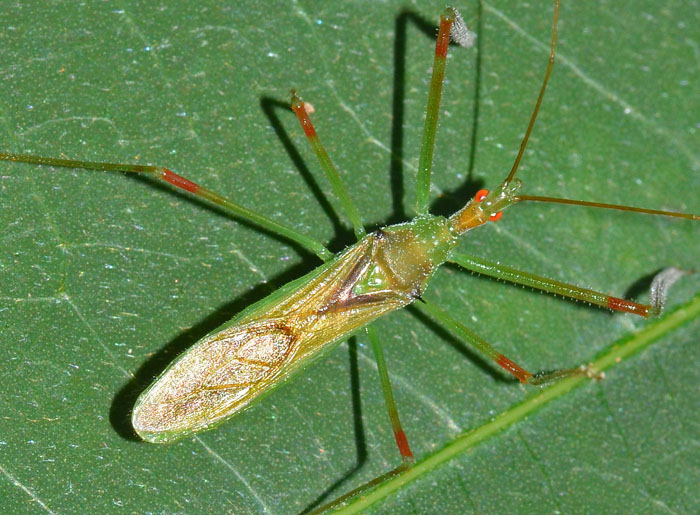 Zelus luridus (Pale Green Assassin Bug). | Again, the Pale Green Assassin Bug but this time the mature version. This is the most common species of Zelus in the eastern US and uses sticky traps as a predation strategy, which is also common to other species in the genus Zelus. The sticky material is produced by a gland on the leg. This gland develops in the second instar. The small photos (09/29/18) show a different specimen.
bug guide (this photo): http://bugguide.net/node/view/945483 wikipedia: http://en.wikipedia.org/wiki/Zelus_luridus | ||
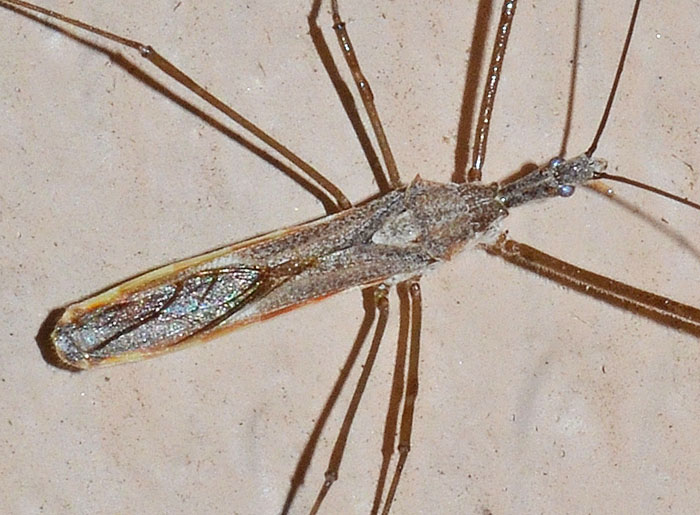 Zelus tetracanthus (Four-spurred Assassin Bug). | This long-legged assassin bug is probably Z. tetracanthus. It has the usual two spines on the shoulders (humeral) and in addition two spines on the top of the thorax. It is broadly distributed across the US. Citing from the second link: "Z. renardii is common in suburban and disturbed habitats in addition to certain natural areas, whereas Z. tetracanthus is usually restricted to natural areas. The behavioral comparison under laboratory conditions indicated that Z. renardii caught prey faster and that feeding duration in this species was shorter than in Z. tetracanthus." bug guide (this photo): http://bugguide.net/node/view/1085637 C. Weirauch et al. Florida Entomol. 95, 641, 2012: http://www.bioone.org/doi/full/10.1653/024.095.0315 |

